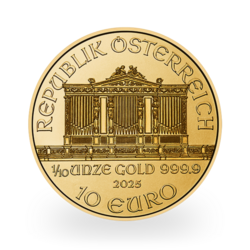Price at Five Month High on U.S. President’s Words, Deeds
The price of gold entered 2017’s Easter long weekend on a five-month high in response to a cascade of geopolitical events and mid-week comments by United States President Donald J. Trump. With the precious metal inching toward the psychological barrier of $1,300 per ounce, some are recalling the dark days following 9/11 when it broke through $1,900, while others say the price simply reflects gold’s true value as a wealth protector, events of the day notwithstanding.
The week’s global unrest that propelled investors toward the safe haven of gold was punctuated by an interview given by President Trump to the Wall Street Journal. He said, “I think our dollar is getting too strong,” meaning that US manufacturers are less able to compete against cheaper Asian and European products. The greenback dropped immediately, the same afternoon, in sharp contrast to when it achieved its highest level in 13 years—shortly after he won the White House. Trump went on to express his desire that the Federal Reserve reconsider its stated intention to gradually increase interest rates … and gold had a firm toehold from which to climb higher.
Investors Cast Wary Eye on World
“Geopolitical tensions.” They are the words that defined one week in the United States and around the world.
It began with the saran gas attack on civilians in Syria, attributed by the U.S. and others to that country’s president Bashar al-Assad but denied by him and, pointedly, by Trump ally Vladimir Putin in Russia. Trump then accused Russia of trying to cover up the chemical attack, straining relations, for the first time, between the world’s two foremost leaders. The U.S. military then unleashed a large number of missiles on the Syrian air force installation said to have been the source of the atrocity. Al-Assad doubled down on his denials by saying the videos of dead children that prompted international outrage were faked, as cover for the American strike.
In other corners, North Korea appeared to be preparing for another nuclear bomb test on the occasion of the 105th birthday of state founder Kim Il-Sung. Mr. Trump ordered a nuclear aircraft carrier and warships to the waters off Japan, while North Korea warned that any American aggression would be answered with a nuclear attack on the USA. Japan issued a travel advisory to its citizens in the region. And the U.S. ended the short week by dropping its most powerful non-nuclear bomb (the MOAB – Massive Ordnance Air Blast or “mother of all bombs”) on what it identified as an ISIS cave complex.
“Geopolitical tensions.” While these words may reasonably be an understatement, they encapsulate the reasoning behind the week’s surge in gold prices.
What Next?
Critics of the Trump administration charge that its focus on events outside U.S. borders serve to distract from its troubles at home: the judicially-challenged ban on foreigners; the initial failure to repeal and replace Obamacare, and; the stalled and as-yet unseen plans for tax reform and massive infrastructure spending. Most observers would agree that this White House is still trying to find its way. This also became apparent in the President’s Wall Street Journal interview when he characterized his chief strategist Stephen K. Bannon (recognized as the mastermind behind the stunning election win and ideological leader of a large portion of the Republican base) as “a guy who works for me.” America’s interventions abroad in this geopolitically tense week are in direct opposition to Bannon’s anti-globalist philosophy, and the rumors of his demise are growing louder. Should that occur, the direction of the United States government becomes anybody’s guess.
In a world (with European elections and Brexit looming) and a great nation struggling with such unpredictability and uncertainty, with no end or path in sight, the price of the greatest safe haven —gold — is on a predictable rise.
Reproduction, in whole or in part, is authorized as long as it includes all the text hyperlinks and a link back to the original source.
The information contained in this article is for information purposes only and does not constitute investment advice or a recommendation to buy or sell.

















